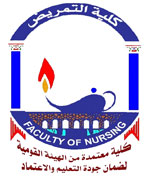Abstract: Exposure to blood-borne pathogens poses a serious occupational threat to health care workers including nursing and dental students; it causes substantial illness and it is unavoidable part of daily patient care. This study aims to assess the occupational exposure to blood and body fluids (BBF) among undergraduate nursing and dental students at internship year in Assiut city. A cross sectional research design was used on 140 nursing students and 150 dental students using a convenient sample technique. The study was conducted at Assiut University Hospitals and Al Azhar University Hospital in Assiut city. A questionnaire sheet for collection of data contains the following main parts: socio-demographic data, history and frequency of occupational exposure to (BBF), information about the occupational exposure to BBF and infection control measures. The main findings of this study were: the mean age was 21.8 years for nursing and 22.9 for dental students. 88.6%, 51.3% respectively of nursing and dental students were exposed to needle stick injuries (NSI) and BBF. All dental and nursing students did not report the exposure incidents and the main causes of not reporting: they don not think anything could be done by (72.1%, 55.3% respectively) among nursing and dental students. A high percentage of the dental and nursing students reported use of gloves during the exposure. 93.3% among dental and 65.7% of nursing students were not vaccinated against hepatitis B. About one third (30.0%, 32.0% respectively) of nursing and dental student had good score of knowledge about and only (2.9%, 15.3% respectively) had poor score of knowledge about occupational diseases and infection control measures. Based on the results of the study it can be concluded that the majority of studied students were exposed to NSI and BBF. The majority of studied students did not report the exposure to BBF. The majority of them were not vaccinated against hepatitis B. One third of nursing and dental student had good score of knowledge. This study recommend that mandatory continuing education and supervision involves all undergraduate dental and nursing students at internship year must contain a specific component on the occupational exposure to BBF. Hepatitis B vaccine must be given obligatory to all studied sample
Research Department
Research Journal
The Journal of American Science Vol: 9: (5) May 2013
Research Member
Research Publisher
The Journal of American Science Vol: 9: (5) May 2013
Research Rank
1
Research Vol
Vol: 9: (5) May 2013
Research Year
2013
Research_Pages
466-475
Research Abstract

